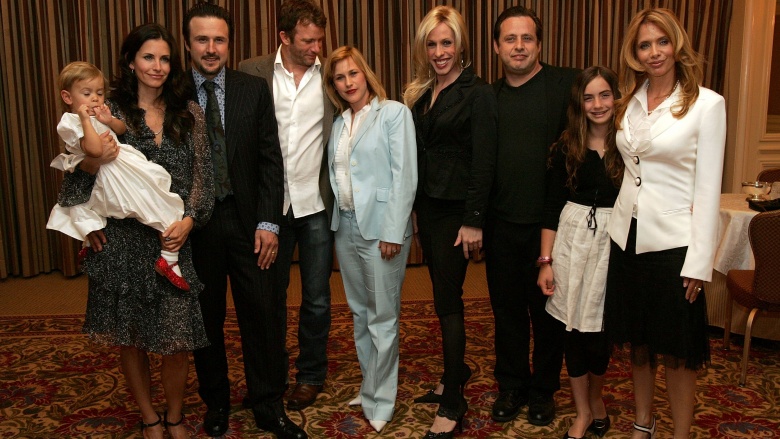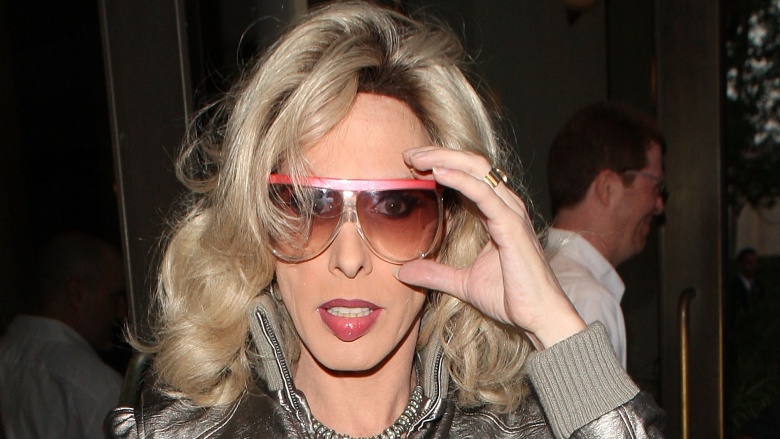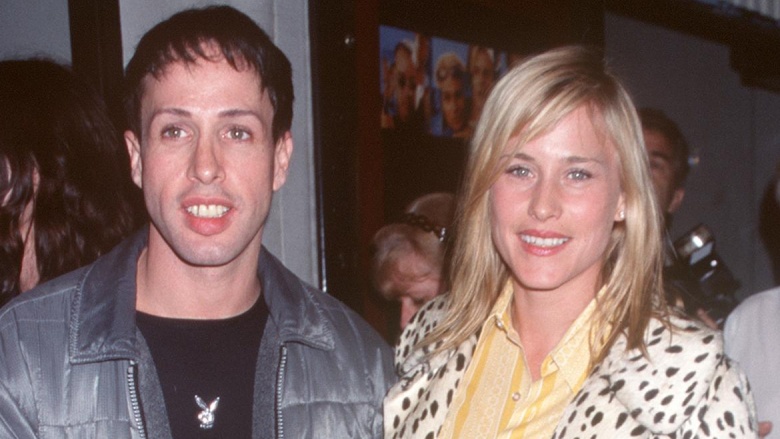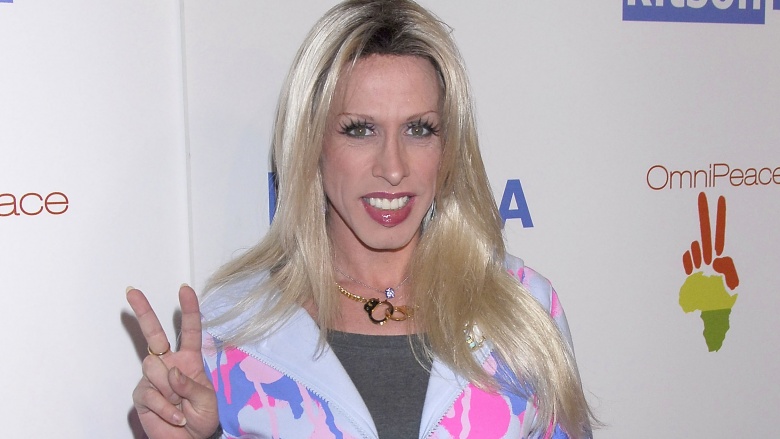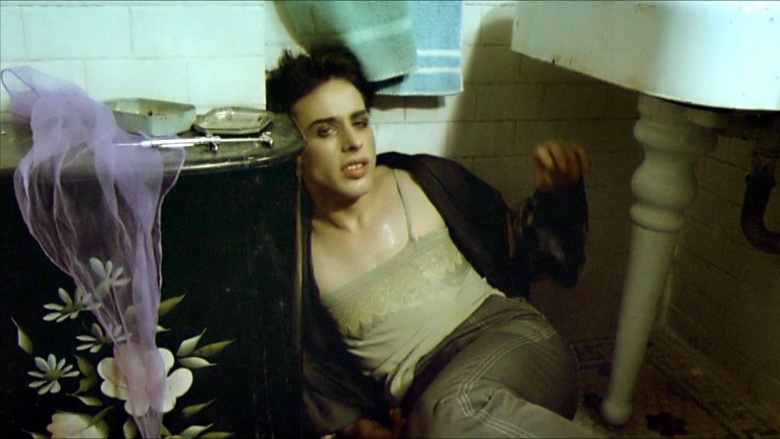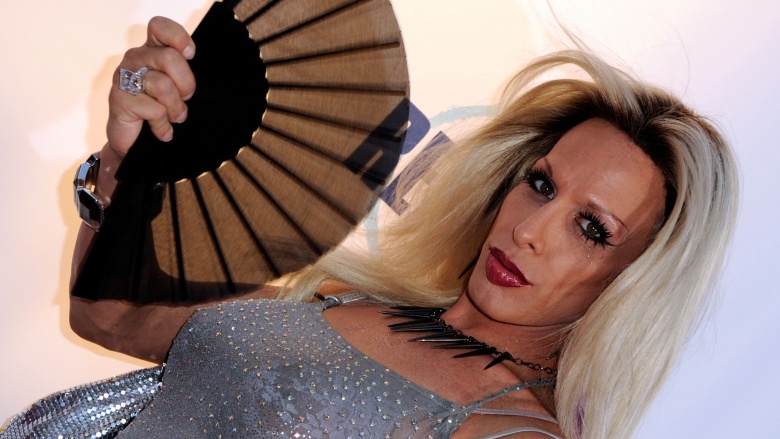The Untold Truth Of Alexis Arquette
She was one of the transgender community's most famous faces. Take a closer look at the prolific and complicated career of Alexis Arquette. Find out who she really was, from her promising beginning to her heartbreaking end.
She secretly battled HIV for nearly three decades
Arquette died in the early morning hours of Sept. 11, 2016 at age 47. Her death certificate, obtained by People magazine, confirmed she had been battling HIV for 29 years. "[She] had been suffering for a long time," a source told People. "At one point, she wasn't able to leave the house; she was in bad shape."
According to The Hollywood Reporter, Arquette "remained fiercely private about her health struggles" and "ignored her friends' and family's entreaties to take the life-saving AIDS drugs that were emerging every year." In the weeks leading up to her death, she had "developed an infection in her liver that spread throughout her body." Her death certificate cites cardiac arrest as her immediate cause of death.
A statement written by Arquette's sister, Patricia Arquette, on the morning of Alexis' death shed more details on her final moments. "[We] held her and sang her David Bowie's 'Starman' as she punched through the veil to the other side. We washed her body in rose petals and surrounded her with flowers."
Her final months were a struggle
The Hollywood Reporter claimed Alexis' final months were spent living in The Palm View, a low-income apartment complex in West Hollywood for residents with HIV or AIDS. Although she was "determined to live self-sufficiently," the report claims she was "struggling to make ends meet."
She began cross-dressing at age nine
Born as Robert on July 28, 1969, Alexis began to cross-dress when she was only 9 years old, according to interview footage posted on YouTube. In that same footage, Alexis recalls being drawn to the female gender from an even earlier age. "Up to about 5 years old, I'd always line up with the girls...I just have flickers of memories living in this commune in Virginia, lining up with the girls [and] wanting to wear dresses."
The Hollywood Reporter adds that she was going by the name "Alexis" by age 16. Sister Patricia told the Los Angeles Times in 2008 that she remembered Alexis "getting dressed in drag at [age] 4."
She sometimes struggled with gender identity
Although she came out as transgender in 2006, Alexis allegedly stopped referring to herself as transgender following Caitlyn Jenner's big debut in 2015. Brother David Arquette talked about Alexis' identity on a February 2016 episode of Kocktails with Khloe. "She was like, 'Yeah, sometimes I'll be a man, sometimes I'll be a woman. I like to refer to myself as gender suspicious,'" explained the Scream star. "I think because of Caitlyn, she's like, 'I did that already. Now let's take it to the next level,'"
Alexis' longtime friend, Sham Ibrahim, shed more light on the issue for The Hollywood Reporter, claiming Alexis began presenting herself as a man in 2013 as her health deteriorated. "[She told me], 'gender is bulls**t.' That 'putting on a dress doesn't biologically change anything. Nor does a sex-change.'" According to Ibrahim, "[Alexis] said that 'sex-reassignment is physically impossible. All you can do is adopt these superficial characteristics but the biology will never change." Sources for Radar alleged that Alexis' health prevented her from getting the sex-change surgery she'd so badly wanted.
"She was very attractive, very beautiful. Men loved her, women loved her. She had many lovers—like, harems of lovers. Even movie stars would be into her—straight, heterosexual guys—because of her androgynous look," Ibrahim told The Hollywood Reporter. "But she could never find the right man to love her. And I think that as her health was deteriorating, [presenting as a woman] was too much of a struggle to even think about. Being able to get up and put that dress on and the wig—it was too much for her."
Patricia helped Alexis land her breakout role
According to The Hollywood Reporter, at age 17, Alexis went with her then-19-year-old sister, Patricia, to New York City, where Patricia was discussing a starring role in Last Exit to Brooklyn (1989). Patricia turned the role down because she was pregnant at the time, but as luck would have it, producers took a liking to Alexis and offered her the role of Georgette. At the time, the report claimed Alexis had "only just begun to experiment with drag performances."
Steady acting roles were hard to find
Although Alexis went on to land roles in Pulp Fiction (1994) and The Wedding Singer (1998) her acting career never matched the level of her famous siblings. According to Ibrahim, Alexis was simply too far ahead of the times. "She was out and proud at 15 years old, at a time when that was just unheard of," Ibrahim told The Hollywood Reporter. "Directors and producers avoided her. She was rightfully angry that she should have had the success and notoriety that comes with being such a talented actor and being born into a family that presents the opportunity to you."
Alexis said even high-profile gigs like The Wedding Singer didn't do much to improve her career. "It doesn't matter how big a film is," she told Out magazine in 2015. "Their attention span is that of a housefly. You're only as good as the last time somebody defamed you." In that same interview she also cited bad experiences with Oprah Winfrey, Sharon Osbourne, and working on the documentary Alexis Arquette: She's My Brother.
She appeared at RuPaul's DragCon
One day after Alexis' death, RuPaul's DragCon posted a panel discussion from May 2016 in which Alexis participated. The topic was Wigstock: The Movie and the public's newfound interest in drag.
"I totally cried today—three times. Just watching it," Arquette said (via Us Weekly). "It's good to see this. It's good to see that people are interested in drag now. There's money to be made from drag, that people can be superstars from drag. It's fantastic. I love it. It turns me on."
"It's also a little scary that people think it's also marginalized. It's starting to get boxed up," she said. "I don't want people to think they can't be a part of this because they are not good at putting on makeup...I think it's cool that you can be living the life of drag or being your authentic self, whether you are working at Starbucks or at a boardroom or just the idea that you can do anything."


